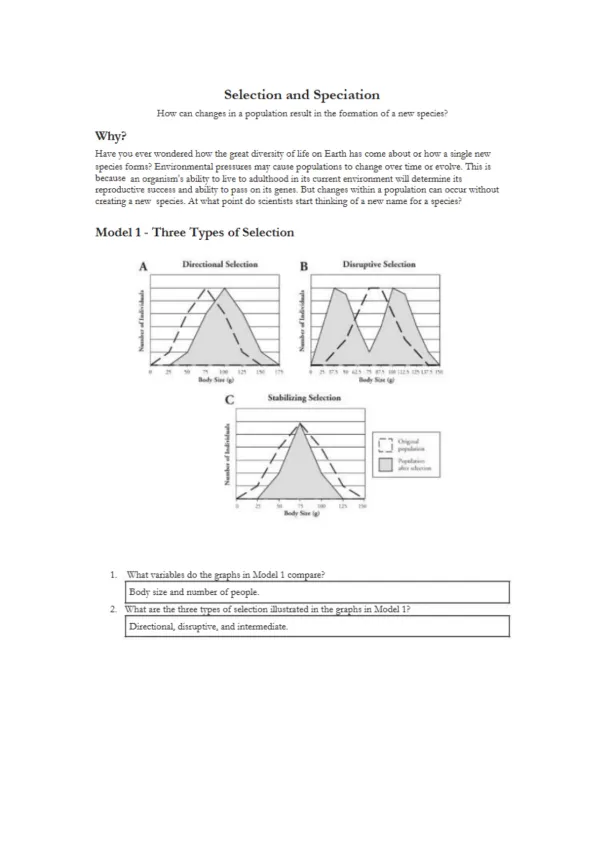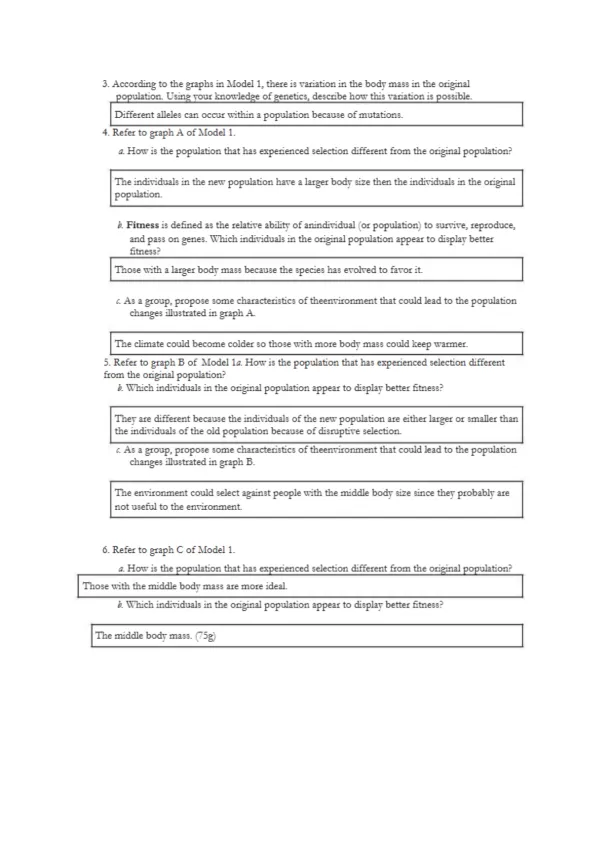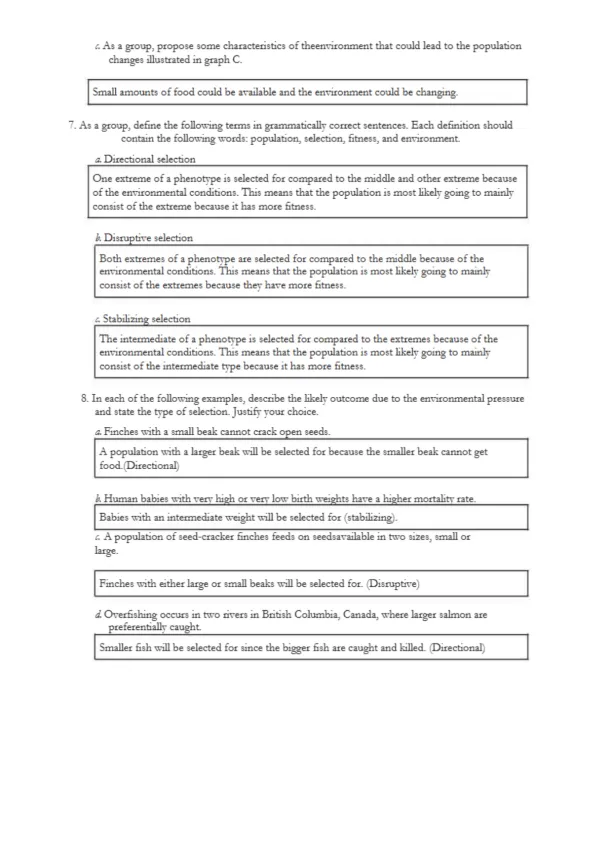Page 1

Loading page image...
Page 2

Loading page image...
Page 3

Loading page image...
Natural selection worksheet illustrating directional, disruptive, and stabilizing selection through body‐size vs. population graphs. Includes questions on comparing variables and identifying selection types from the models.
Loading page image...
Loading page image...
Loading page image...
This document has 7 pages. Sign in to access the full document!